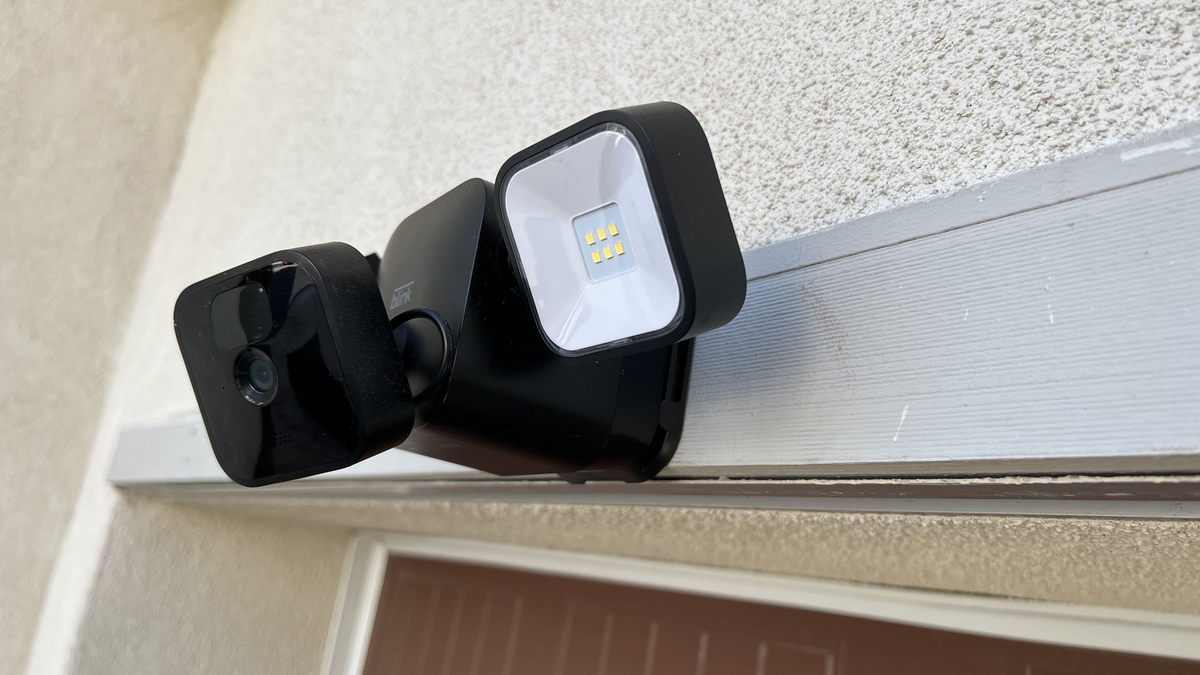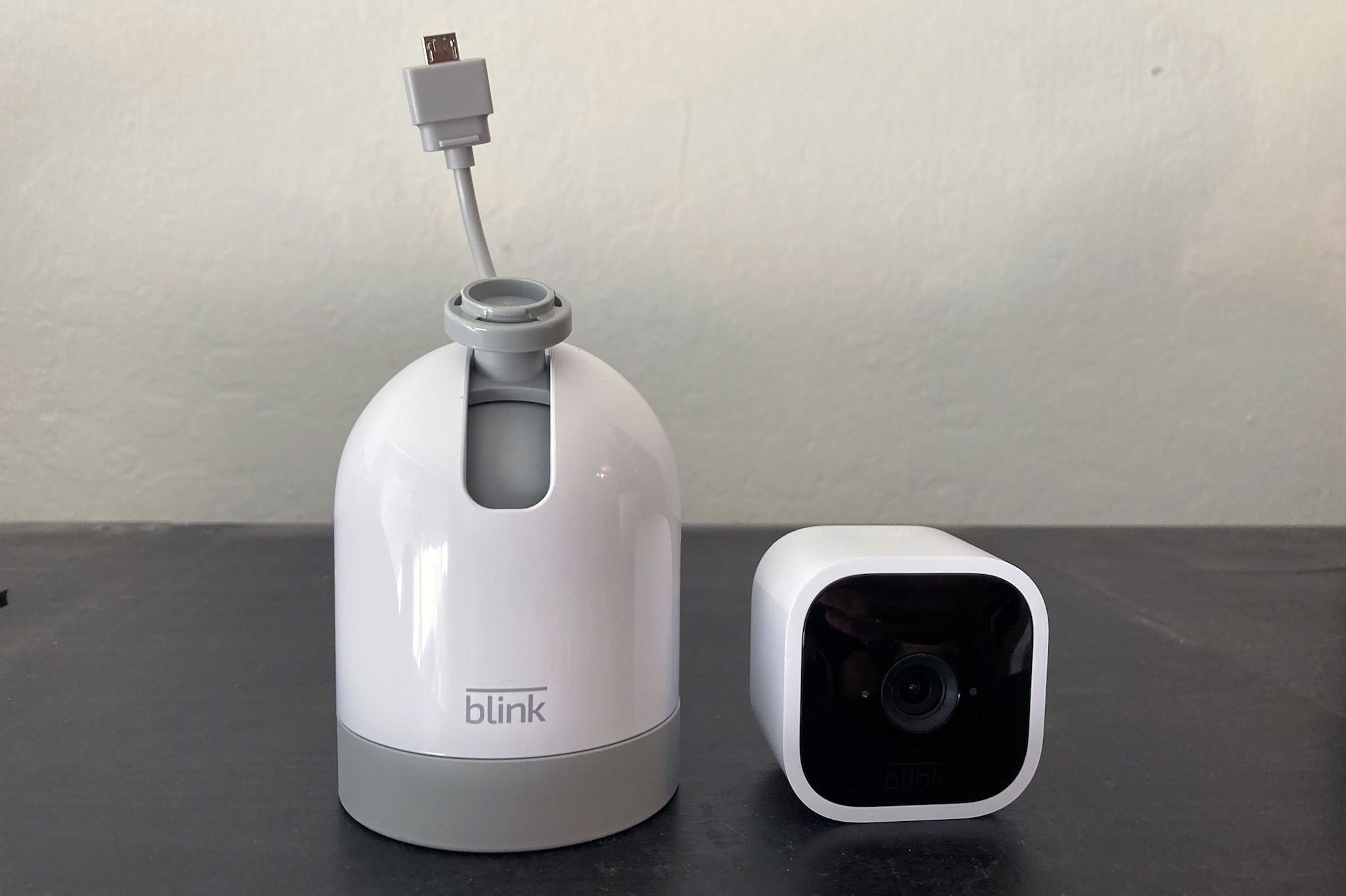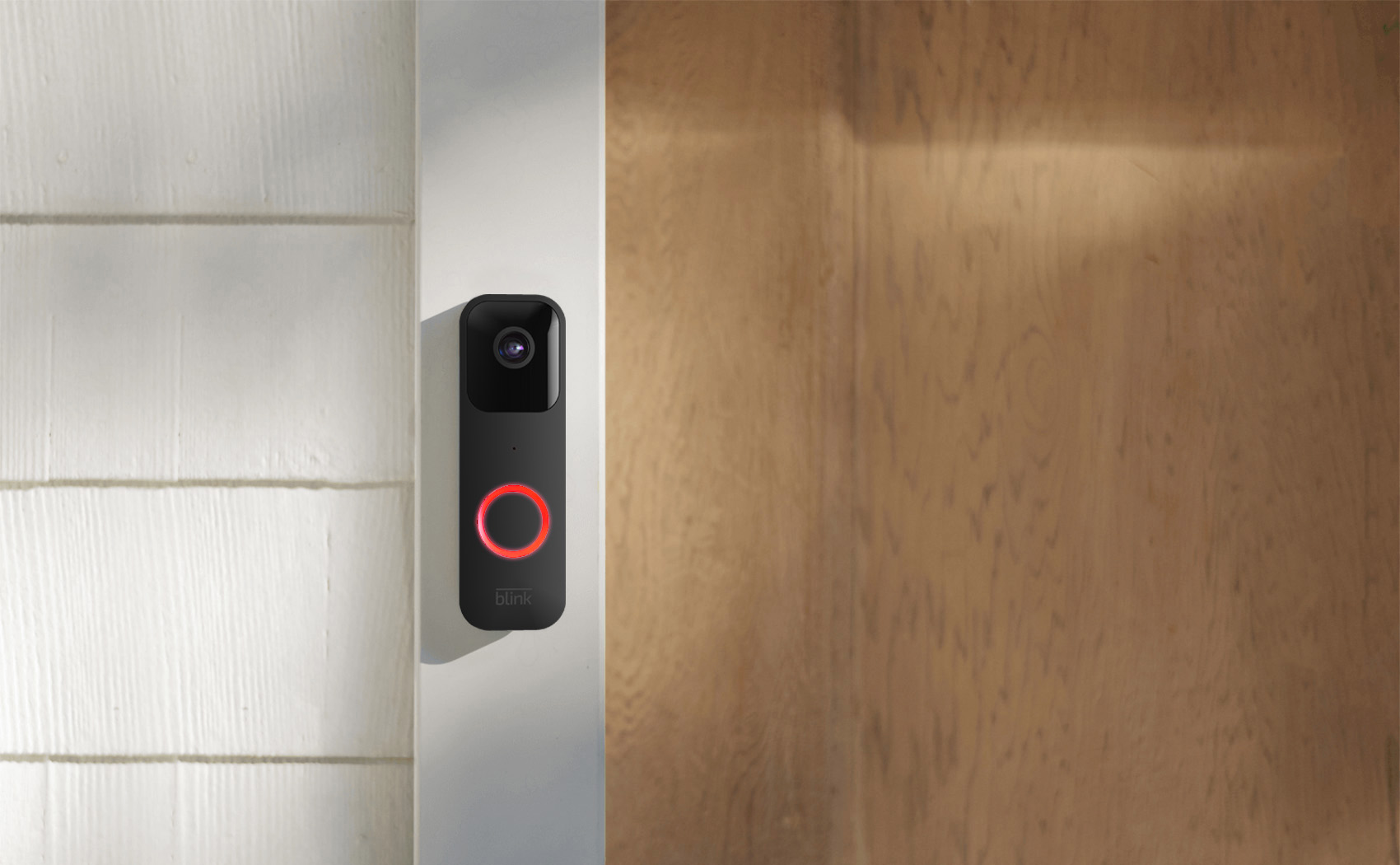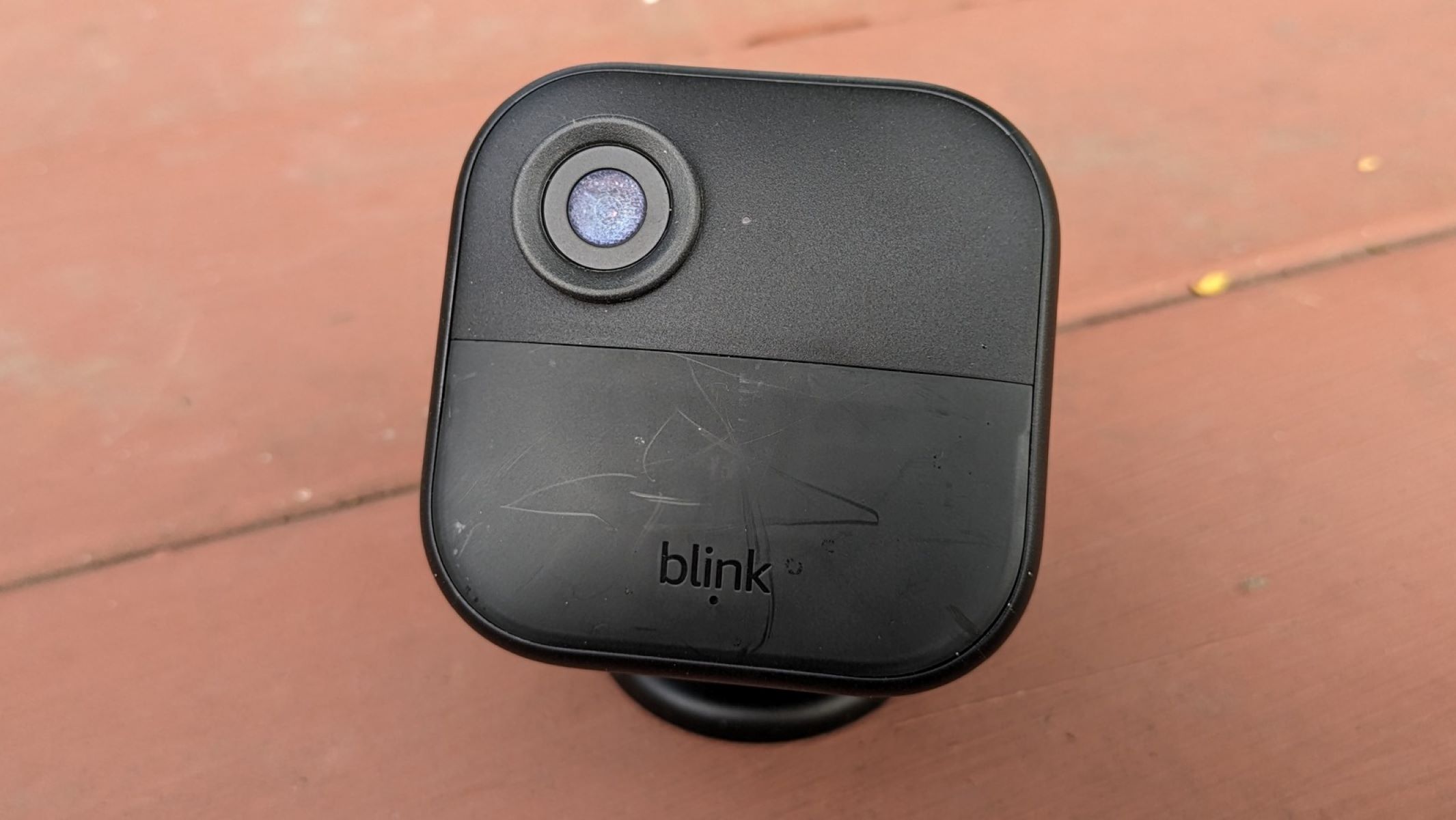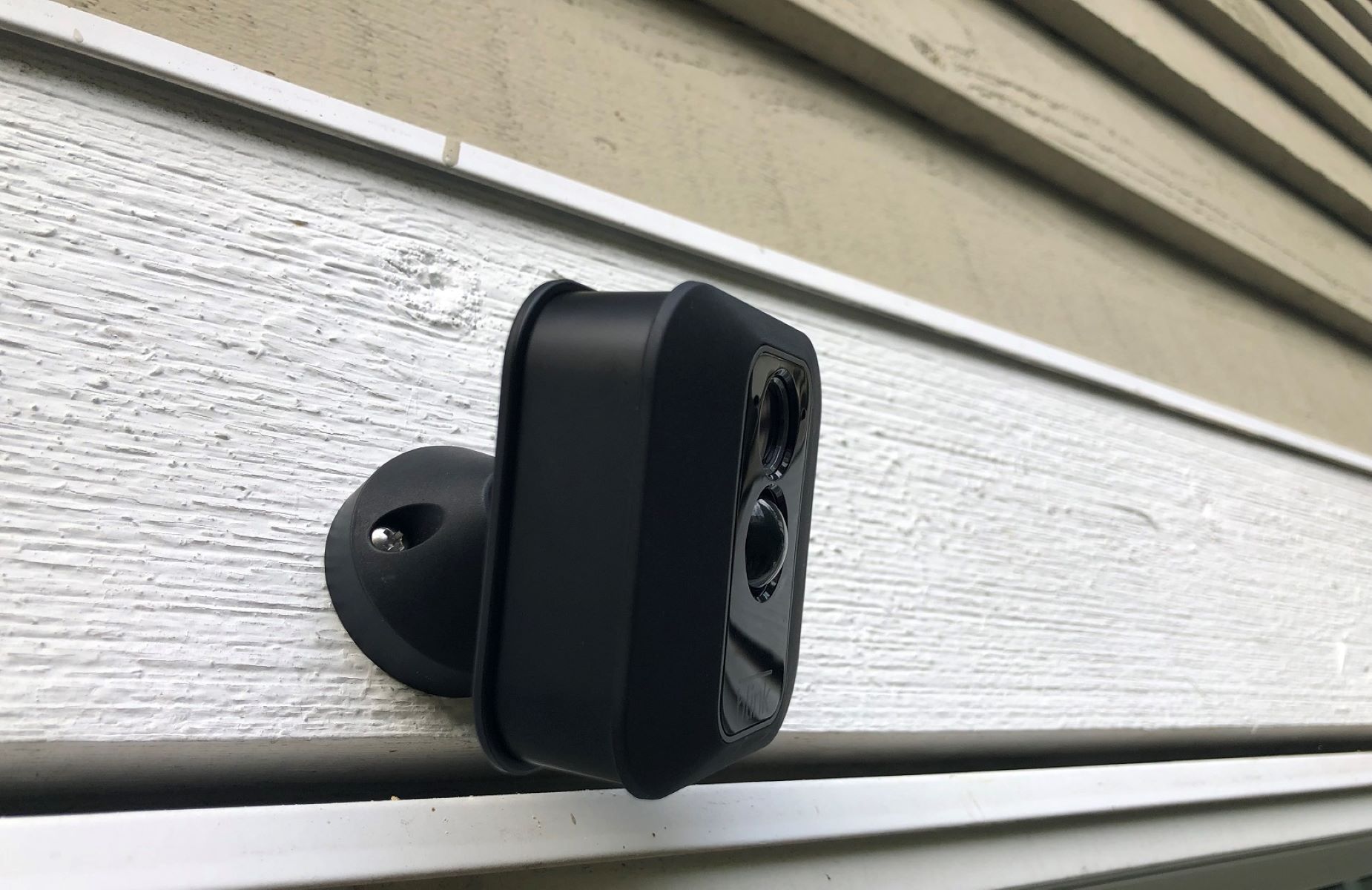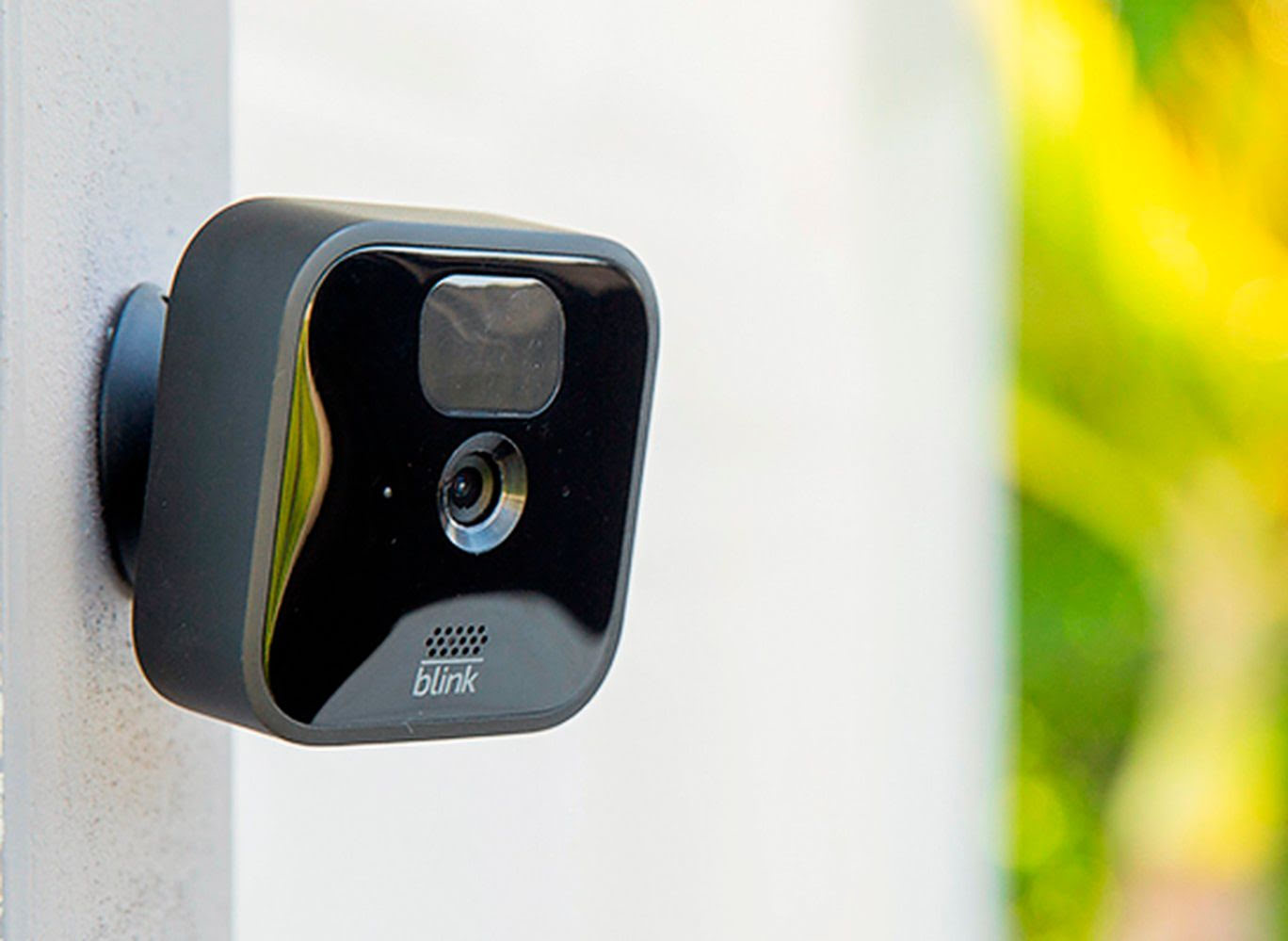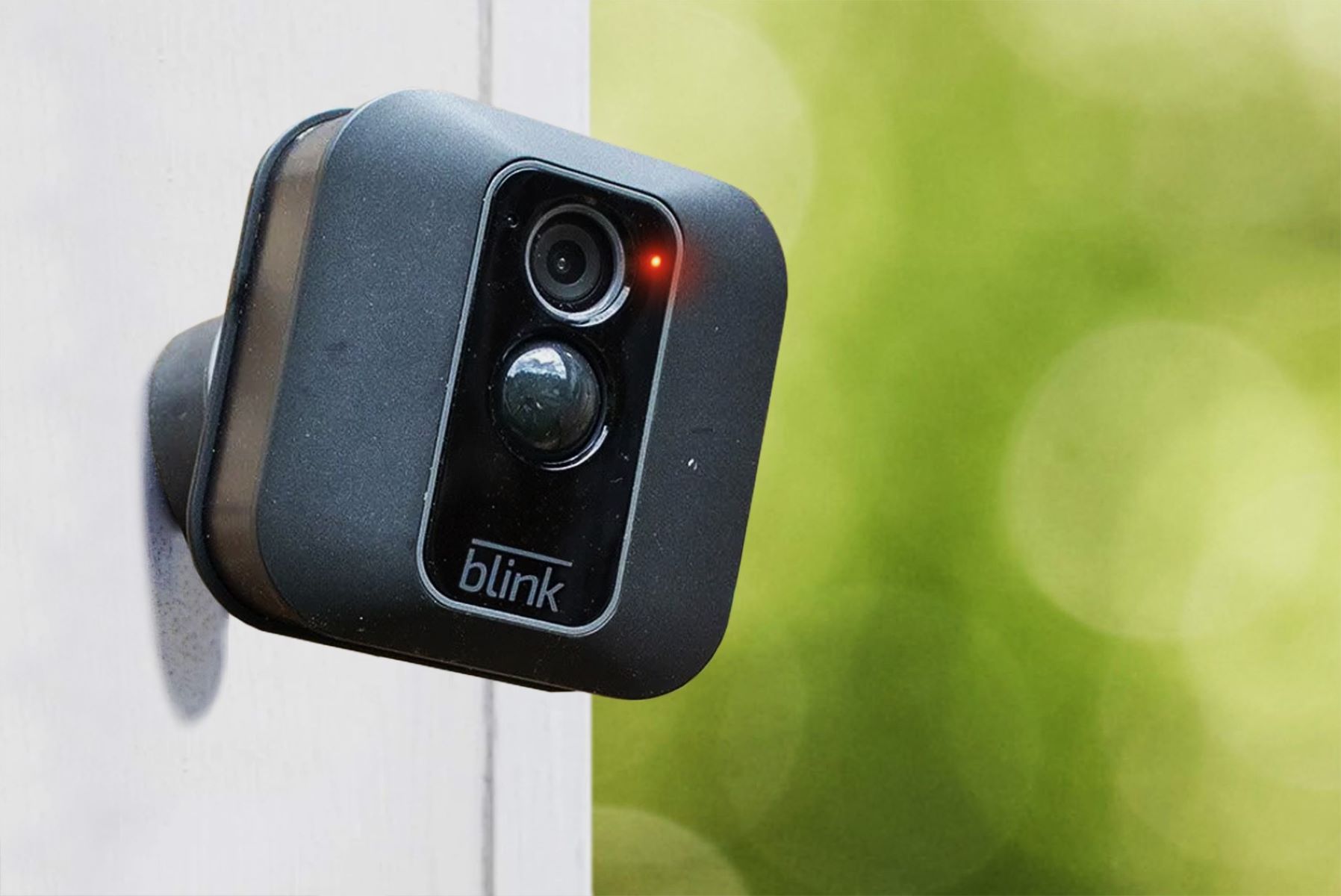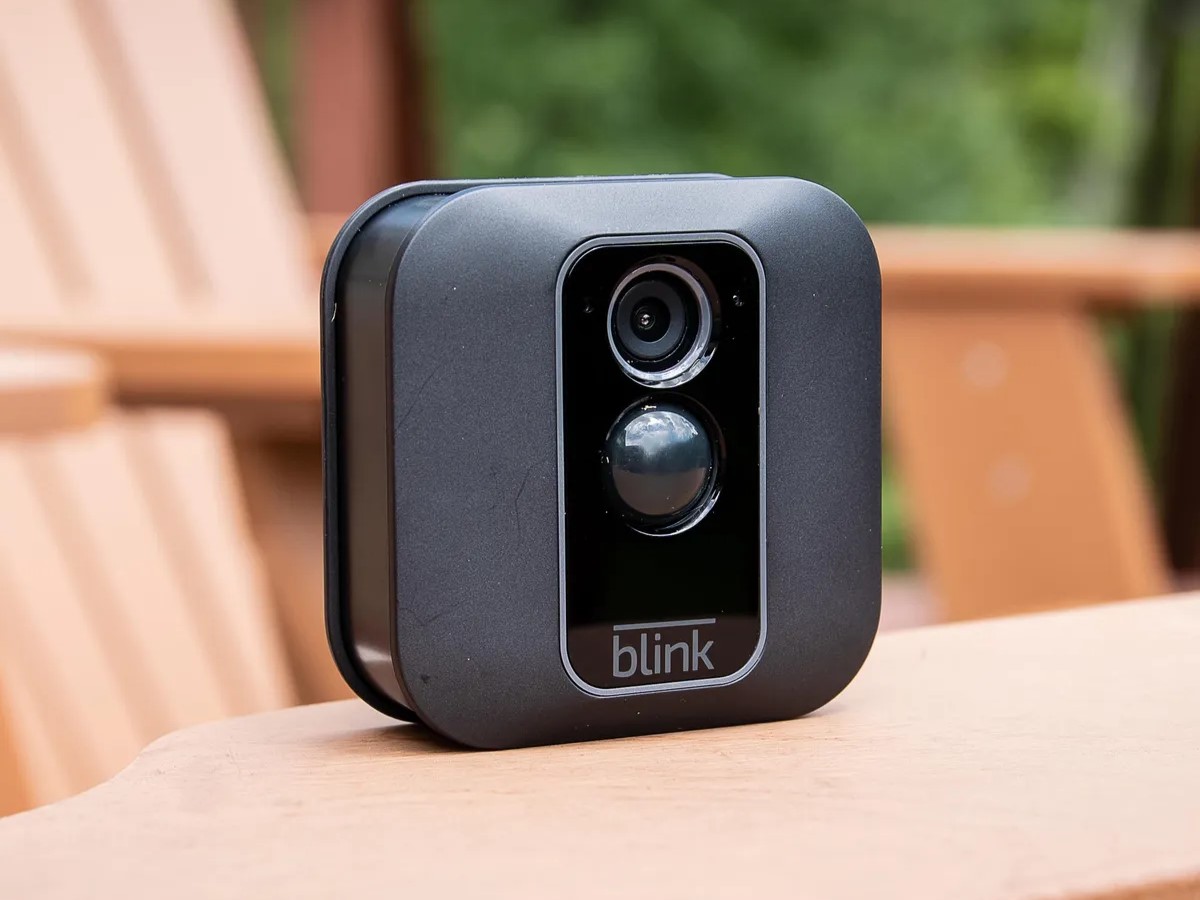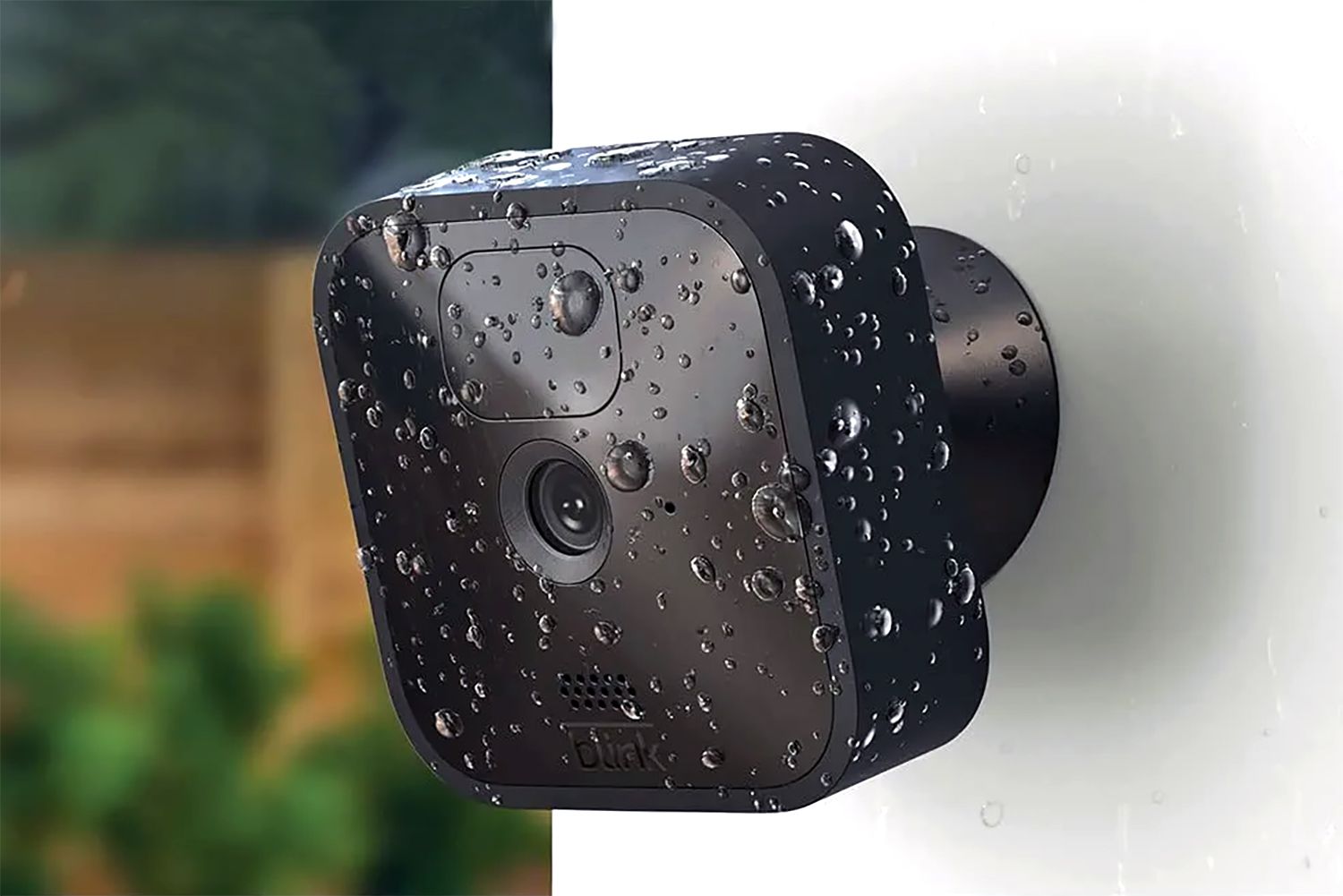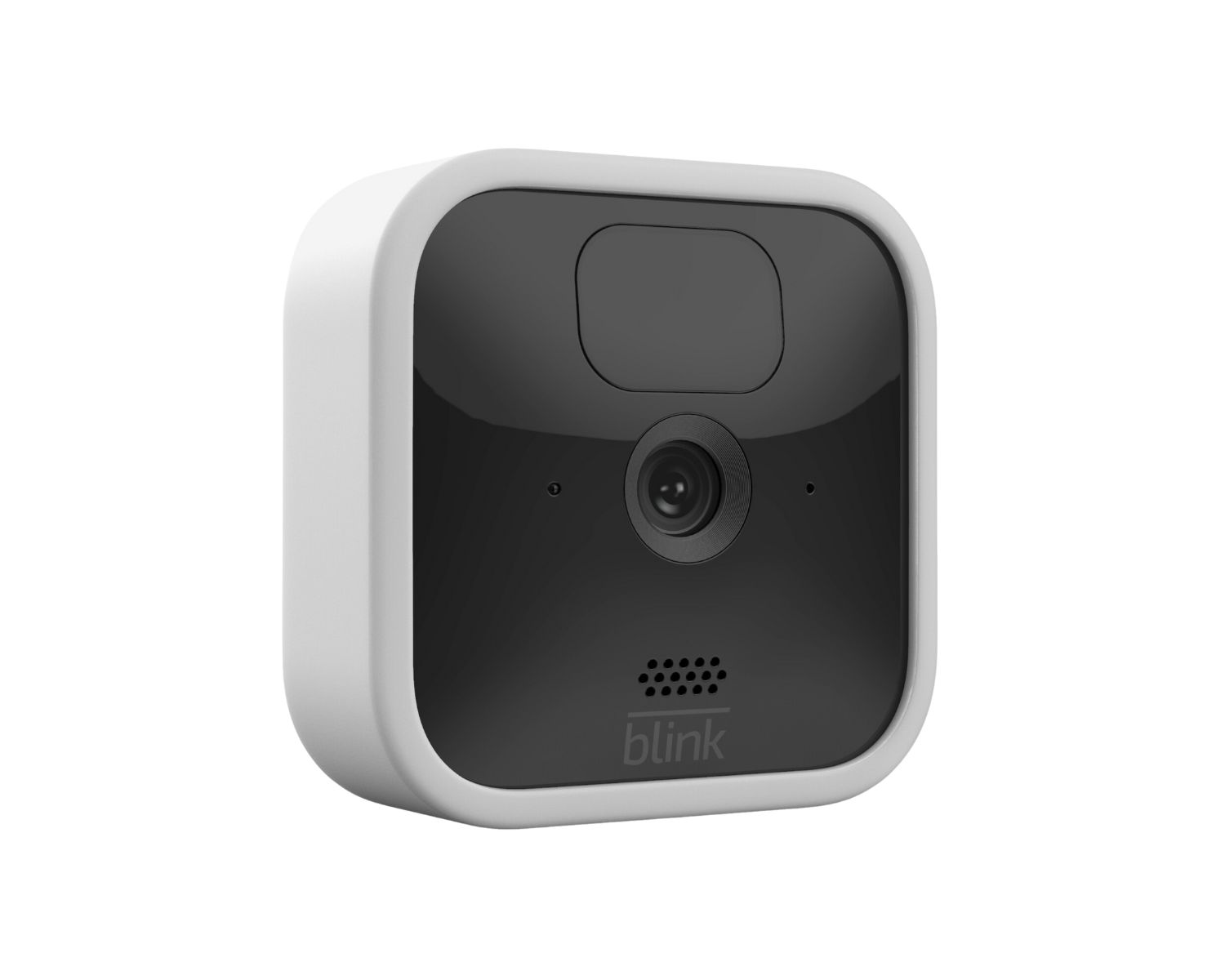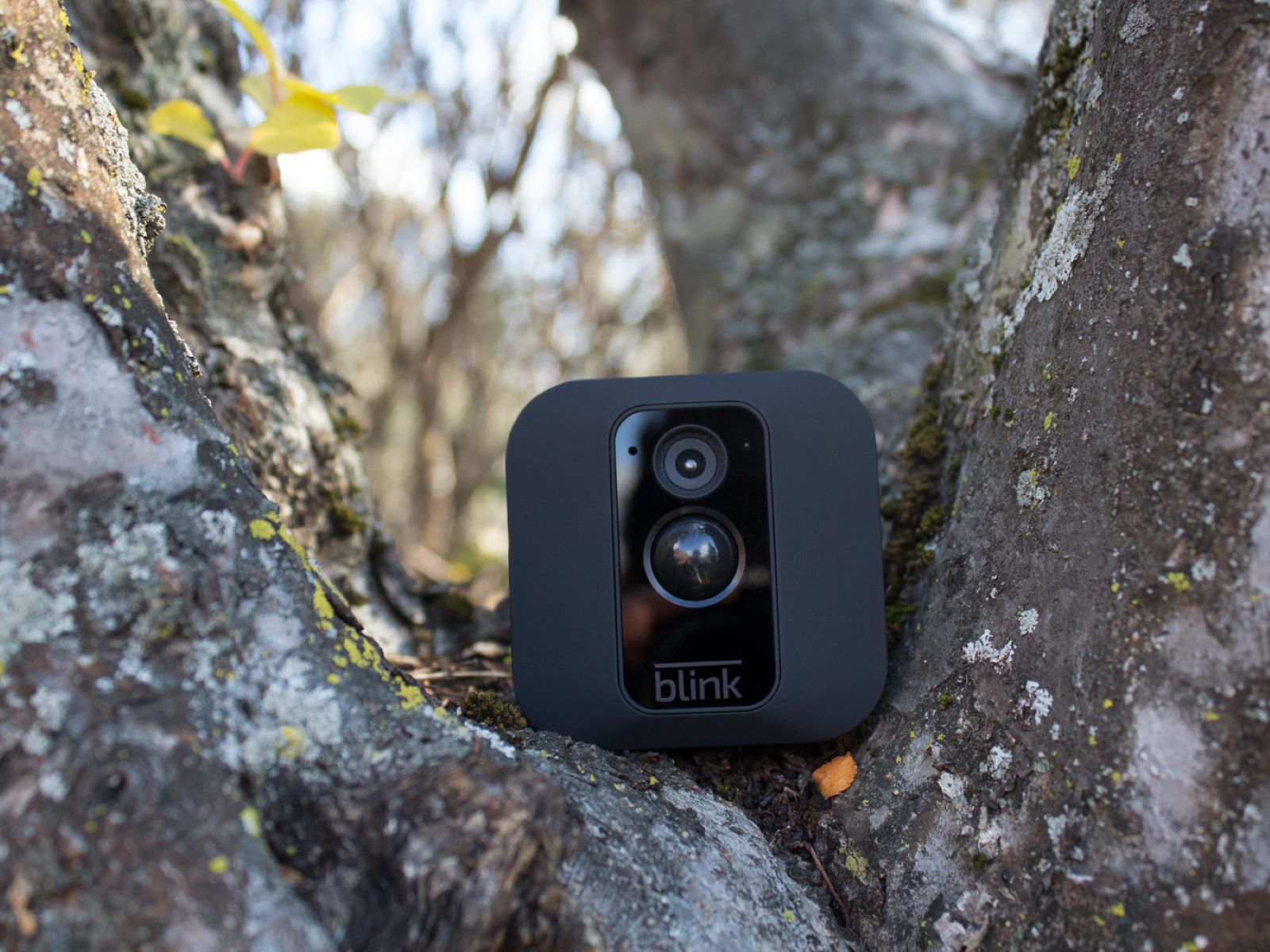Home>Home Security and Surveillance>Why Is My Blink Outdoor Camera Not Picking Up Motion
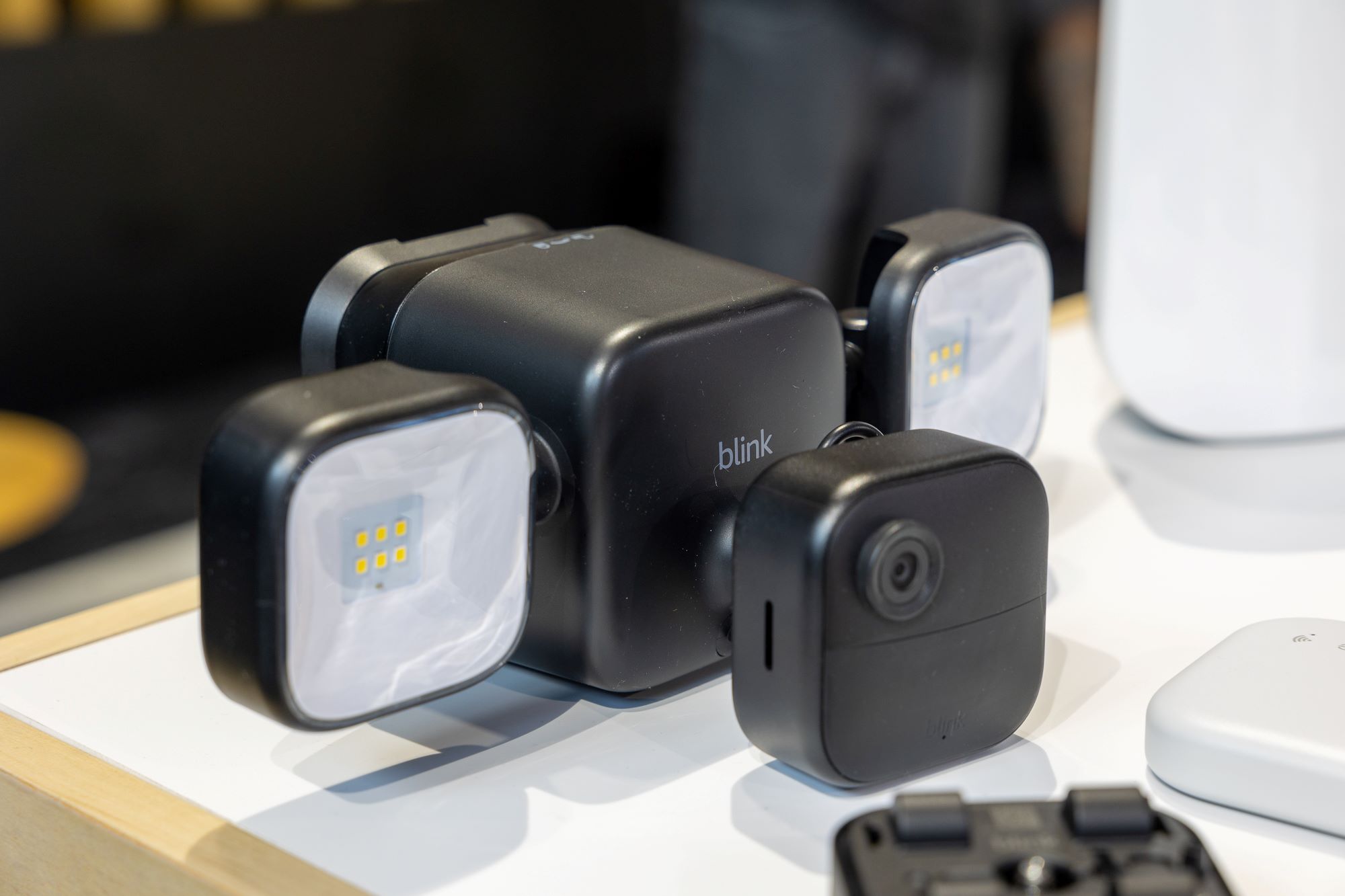

Home Security and Surveillance
Why Is My Blink Outdoor Camera Not Picking Up Motion
Modified: October 20, 2024
Troubleshoot why your Blink Outdoor camera is not detecting motion at your home. Learn how to improve your home security and surveillance with these helpful tips.
(Many of the links in this article redirect to a specific reviewed product. Your purchase of these products through affiliate links helps to generate commission for Storables.com, at no extra cost. Learn more)
Introduction
Welcome to the world of home security and surveillance! In today’s fast-paced world, it is essential to protect our homes and loved ones from potential threats. With advancements in technology, home security systems have become smarter and more efficient than ever before. One popular choice among homeowners is the Blink Outdoor Camera, renowned for its ease of installation and usage. However, there may be instances where you notice that your Blink Outdoor Camera is not picking up motion as expected. Don’t worry – in this article, we will explore the common reasons behind this issue and provide troubleshooting steps to resolve it.
Having a reliable outdoor camera that can detect and record motion is crucial for ensuring the safety of your property. Whether it’s monitoring the front yard, keeping an eye on the driveway, or checking for any suspicious activity, the Blink Outdoor Camera plays a vital role in providing peace of mind. So, why is your camera not picking up motion?
Several factors can contribute to this issue, including incorrect camera placement, improper motion sensitivity settings, obstructions in the camera’s field of view, camera firmware issues, low battery life, and Wi-Fi connection problems. By understanding these potential causes and following the troubleshooting steps outlined in this article, you will be able to get your Blink Outdoor Camera back up and running efficiently.
Now, let’s dive deeper into each of these common reasons and explore how you can resolve them to ensure that your Blink Outdoor Camera captures every important motion event.
Key Takeaways:
- Ensure your Blink Outdoor Camera captures every motion event by adjusting placement, sensitivity settings, removing obstructions, updating firmware, maintaining battery life, and optimizing Wi-Fi connection. These steps enhance security and peace of mind.
- Regularly monitor and maintain your Blink Outdoor Camera’s placement, sensitivity settings, obstructions, firmware, battery life, and Wi-Fi connection to ensure accurate motion detection and reliable surveillance for your property.
Common Reasons for Blink Outdoor Camera Not Picking Up Motion
If you’ve noticed that your Blink Outdoor Camera is not detecting motion as expected, there are several common reasons why this might be happening. Let’s take a closer look at each of these reasons:
- Incorrect Camera Placement: The placement of your camera plays a crucial role in its ability to detect motion effectively. If the camera is positioned too high or too low, or if it is facing the wrong direction, it may not capture motion events accurately. Ensure that the camera is installed at the recommended height and angle, facing the area you want to monitor.
- Incorrect Motion Sensitivity Settings: The motion sensitivity settings of your Blink Outdoor Camera determine its responsiveness to motion. If the sensitivity level is set too low, the camera may not detect subtle movements. On the other hand, if it is set too high, it may trigger unnecessary motion alerts. Adjust the motion sensitivity settings to find the optimal balance for your specific monitoring needs.
- Obstructions in the Camera’s Field of View: Anything that obstructs the camera’s view, such as trees, shrubs, or other objects, can hinder its ability to detect motion accurately. Make sure there are no physical obstructions blocking the camera’s field of view. Trim any overhanging branches or plants that may be in the way.
- Camera Firmware Issues: Outdated or buggy camera firmware can also lead to motion detection problems. Check for any available firmware updates for your Blink Outdoor Camera and make sure it is running the latest version. Firmware updates often include bug fixes and performance improvements that can help resolve motion detection issues.
- Low Battery Life: When the battery level of your camera is low, it may not have enough power to detect and capture motion events effectively. Monitor the battery level regularly and replace or recharge it as needed. Keeping the battery charged ensures optimal camera performance and reliable motion detection.
- Wi-Fi Connection Issues: A stable Wi-Fi connection is essential for proper functionality of your Blink Outdoor Camera. If your camera is experiencing intermittent or weak Wi-Fi signals, it may struggle to transmit motion detection data to the cloud. Check your Wi-Fi signal strength and troubleshoot any connectivity issues that may be affecting your camera’s performance.
Now that we have identified the common reasons why your Blink Outdoor Camera may not be picking up motion, let’s move on to the troubleshooting steps you can take to address these issues and restore proper functionality.
Incorrect Camera Placement
The placement of your Blink Outdoor Camera plays a significant role in its ability to detect motion accurately. If the camera is positioned incorrectly, it may not capture motion events as expected. Here are a few considerations for ensuring proper camera placement:
- Height and Angle: The camera should be installed at the recommended height and angle for optimal motion detection. Typically, placing the camera at a height of 5 to 7 feet above the ground provides a good balance between capturing motion and maintaining a wide field of view. Additionally, make sure the camera is angled towards the area you want to monitor.
- Field of View: Before finalizing the camera placement, assess the field of view to ensure it covers the desired monitoring area effectively. Check for any blind spots or areas where potential motion events may be missed. Adjust the camera position or add additional cameras to cover those areas if necessary.
- Avoiding Glare or Reflections: Direct sunlight or artificial light sources can cause glare or reflections that interfere with motion detection. Avoid placing the camera where it is directly facing a light source, as it can impact its ability to accurately detect motion. If needed, use a sunshade or adjustable mount to minimize glare.
- Secure Mounting: Ensure that the camera is securely mounted to prevent any accidental movement or displacement. A stable mount ensures consistent motion detection performance. Use the provided mounting hardware or compatible accessories recommended by the manufacturer.
By paying attention to these placement considerations, you can maximize the effectiveness of your Blink Outdoor Camera in capturing motion events. It’s worth experimenting with different positions and angles to find the optimal setup for your specific monitoring needs.
Incorrect Motion Sensitivity Settings
The motion sensitivity settings of your Blink Outdoor Camera determine how responsive it is to motion events. If the sensitivity level is set too low, the camera may miss subtle movements. Conversely, if it is set too high, it may trigger false alarms and send numerous unnecessary alerts. Here are some tips for adjusting the motion sensitivity settings:
- Start with the Default Setting: When you first set up your Blink Outdoor Camera, it will have a default motion sensitivity setting. This default setting is a good starting point for most scenarios. It provides a balance between capturing important motion events and avoiding false alarms.
- Observe the Motion Detection: Once the camera is in place, monitor its performance and observe how it detects motion. Assess whether it captures all the motion events you want it to and if it is triggering any false alarms. This observation will help you determine if the sensitivity level needs to be adjusted.
- Incremental Adjustments: If you find that the camera is missing certain motion events, gradually increase the sensitivity level in small increments. Test the camera’s performance after each adjustment to ensure that it is capturing the desired motion events without triggering any unnecessary alerts.
- Zone-Based Sensitivity: Some camera models offer advanced features, such as zone-based sensitivity settings. With these settings, you can define specific areas within the camera’s field of view where you want higher or lower sensitivity. This allows you to customize the motion detection according to your specific requirements.
Finding the right balance for motion sensitivity may require some trial and error. It’s important to strike a balance where your Blink Outdoor Camera detects and records relevant motion events while minimizing false alarms.
Keep in mind that environmental factors, such as lighting conditions and weather, can also affect motion detection. Periodically review and adjust the motion sensitivity settings based on changes in the monitored area or any new obstructions that may have appeared.
By fine-tuning the motion sensitivity settings, you can ensure that your Blink Outdoor Camera accurately captures the motion events that matter most to you, providing you with enhanced security and peace of mind.
Obstructions in the Camera’s Field of View
Obstructions in the field of view of your Blink Outdoor Camera can hinder its ability to detect motion accurately. Any object, such as trees, shrubs, or even raindrops on the camera lens, can block the camera’s view and potentially cause it to miss important motion events. Here are some steps you can take to address obstructions:
- Clear the Line of Sight: Ensure that there are no physical obstructions directly in front of the camera. Trim any overhanging branches or vegetation that may be blocking the camera’s field of view. Also, make sure there are no objects placed in front of or too close to the camera that may obstruct its view.
- Regular Maintenance: Keep the camera and its lens clean and free from dirt, dust, and debris. Regularly wipe the lens with a soft, lint-free cloth to prevent any buildup that can obstruct the camera’s view. Clean the surrounding area of the camera to remove any potential obstructions.
- Consider Camera Angle and Position: Evaluate the camera’s angle and position to ensure that it provides an unobstructed view of the area you wish to monitor. Adjust the camera’s mounting angle or position, if necessary, to avoid any objects that may come into the camera’s field of view and interfere with motion detection.
- Install Additional Cameras: If there are specific areas where obstructions cannot be completely removed, consider installing additional cameras to ensure comprehensive coverage. This can help overcome any blind spots caused by permanent obstructions and provide better motion detection coverage.
Regularly inspecting and clearing any obstructions in the camera’s field of view is crucial for reliable motion detection. By maintaining a clear line of sight, you can ensure that your Blink Outdoor Camera captures all the important motion events you need to monitor.
In addition, it is a good practice to periodically check for any new obstructions that may appear over time, such as growing vegetation or objects that have been moved. By staying proactive and addressing obstructions promptly, you can optimize the performance of your Blink Outdoor Camera and maintain a high level of security around your property.
Camera Firmware Issues
Camera firmware is the software that runs on your Blink Outdoor Camera. Outdated or buggy firmware can potentially cause issues with motion detection. If your camera firmware is not up to date or there is a known issue with the current version, it might affect the camera’s ability to detect motion accurately. Here are some steps to address potential camera firmware issues:
- Check for Firmware Updates: Regularly check for firmware updates for your Blink Outdoor Camera. Manufacturers often release firmware updates to improve camera performance, fix bugs, and enhance motion detection capabilities. Visit the official Blink website or use the Blink mobile app to search for available firmware updates.
- Update the Firmware: If a firmware update is available, follow the manufacturer’s instructions to download and install it on your Blink Outdoor Camera. Make sure to carefully follow the firmware installation process and allow the camera to complete the update before testing its motion detection capabilities.
- Reset the Camera: If you continue to experience issues with motion detection even after updating the firmware, you may consider resetting the camera to its factory settings. The reset process will remove any customized settings and restore the camera to its default configuration. Before resetting, make sure to backup any important footage or settings that you want to retain.
- Contact Support: If updating the firmware and resetting the camera do not resolve the motion detection problem, it’s recommended to reach out to the Blink customer support team for further assistance. They can provide specific troubleshooting steps or guide you through additional troubleshooting options.
Keeping your Blink Outdoor Camera’s firmware up to date is essential for optimal performance, including accurate motion detection. Firmware updates often include bug fixes and improvements that can address known issues related to motion detection. Regularly checking for updates and staying proactive in updating the firmware will help ensure that your Blink Outdoor Camera functions reliably.
Remember to always follow the manufacturer’s instructions when updating the firmware or performing a reset on your camera. By staying up to date with firmware updates and addressing any potential issues promptly, you can maximize the motion detection capabilities of your Blink Outdoor Camera.
Low Battery Life
Low battery life can significantly impact the motion detection performance of your Blink Outdoor Camera. When the battery level is low, the camera may not have enough power to consistently detect and capture motion events. Here are some steps to address low battery life:
- Monitor Battery Level: Keep an eye on the battery level of your Blink Outdoor Camera. Check the battery status regularly through the Blink mobile app or the camera’s indicator lights. This will help you stay aware of the battery level and take prompt action when it starts to run low.
- Replace or Recharge the Battery: If the battery level is low, replace it with a fully charged battery or recharge the existing battery using the provided charging cable. Make sure to use only the recommended batteries or charging accessories specified by the manufacturer to ensure compatibility and safety.
- Optimize Camera Settings: Adjusting certain camera settings can help extend the battery life. For example, reducing the camera’s video resolution or lowering the frame rate can help conserve power. However, be mindful that lowering these settings may also impact the quality of the captured footage. Find the right balance between battery life and video quality that suits your monitoring needs.
- Consider Solar Panel or Power Adapter: If your Blink Outdoor Camera is consistently experiencing low battery life, you may want to consider using a solar panel or a power adapter. These accessories can provide a continuous power supply to the camera, eliminating the need to rely solely on battery power. Consult the manufacturer’s recommendations for compatible solar panel or power adapter options.
Regularly monitoring the battery level and taking proactive steps to maintain sufficient power are essential for reliable motion detection. By promptly replacing or recharging the battery when necessary, and considering power-saving settings or alternative power sources, you can ensure that your Blink Outdoor Camera captures motion events consistently without interruptions.
Keep in mind that battery life can vary depending on factors such as camera usage, environmental conditions, and the frequency of motion events. By understanding your specific monitoring needs and optimizing the camera’s power management, you can maximize the battery life and enjoy uninterrupted motion detection.
Wi-Fi Connection Issues
A stable Wi-Fi connection is crucial for the proper functioning of your Blink Outdoor Camera. If there are Wi-Fi connection issues, it can impact the camera’s ability to transmit motion detection data effectively. Here are some steps you can take to troubleshoot Wi-Fi connection issues:
- Check Wi-Fi Signal Strength: Assess the Wi-Fi signal strength in the area where the camera is installed. A weak or intermittent Wi-Fi signal can disrupt communication between the camera and the sync module, leading to motion detection issues. Make sure that the camera is within the recommended range of your Wi-Fi router for optimal signal strength.
- Reset Wi-Fi Router: If you’re experiencing Wi-Fi connection issues with the Blink Outdoor Camera, try resetting your Wi-Fi router. This can help resolve any temporary glitches or conflicts that might be affecting the camera’s connection. Follow the instructions provided by your router’s manufacturer to perform a proper reset.
- Relocate the Sync Module: If the camera’s connection issues persist, try moving the sync module closer to the camera or to a location with better Wi-Fi coverage. The sync module serves as the bridge between the camera and your Wi-Fi network, so ensuring it is in an optimal position can improve the camera’s connection stability.
- Verify Wi-Fi Credentials: Check that the Wi-Fi credentials entered during the initial camera setup are correct. A simple typo in the Wi-Fi password can prevent the camera from connecting to the network. Double-check the SSID (network name) and password entered for your Wi-Fi network within the Blink mobile app or the camera’s settings.
- Reduce Interference: Wi-Fi interference from other devices or networks can affect the camera’s connection stability. To minimize interference, move the camera or the Wi-Fi router away from other electronic devices, such as cordless phones, microwaves, or baby monitors. Additionally, consider changing the Wi-Fi channel on your router to avoid potential conflicts with neighboring networks.
- Update Router Firmware: Ensure that your Wi-Fi router’s firmware is up to date. Outdated router firmware can lead to connectivity issues. Check the manufacturer’s website or contact their support for instructions on how to update the firmware to the latest version.
Troubleshooting Wi-Fi connection issues requires patience and persistence. By following these steps and optimizing your Wi-Fi network, you can improve the stability and reliability of the connection between your Blink Outdoor Camera and the sync module. A strong and consistent Wi-Fi connection will ensure uninterrupted motion detection and video recording.
If you are still experiencing Wi-Fi connection problems with your Blink Outdoor Camera, it is recommended to reach out to the manufacturer’s customer support for further assistance. They can provide specific troubleshooting steps tailored to your setup and offer additional guidance to resolve any persistent Wi-Fi issues.
Make sure the camera is placed at the right height and angle for optimal motion detection. Also, check for any obstructions or interference that may be affecting the camera’s ability to pick up motion.
Troubleshooting Steps for Blink Outdoor Camera Not Picking Up Motion
If your Blink Outdoor Camera is not picking up motion as expected, here are some troubleshooting steps you can follow to address the issue:
- Adjust Camera Placement: Review the camera placement and ensure that it is positioned correctly. Make sure it is at the recommended height and angle, facing the desired monitoring area. Avoid any obstructions or glare that may hinder motion detection.
- Review Motion Sensitivity Settings: Check the motion sensitivity settings of your camera. Adjust the sensitivity level to ensure that it captures the desired motion events without triggering false alarms. Make incremental adjustments until you find the optimal balance for your specific monitoring needs.
- Remove any Obstructions: Inspect the camera’s field of view and clear any physical obstructions. Trim overhanging branches, adjust blinds or curtains, and ensure that there are no objects directly in front of the camera that may block its view.
- Update Camera Firmware: Check for any available firmware updates for your Blink Outdoor Camera. Outdated firmware can lead to performance issues, including problems with motion detection. Install the latest firmware to ensure your camera is running on the most up-to-date software.
- Ensure Sufficient Battery Life: Monitor the battery level of your camera regularly. Replace or recharge the battery when it is low to ensure that the camera has enough power for motion detection. Optimize camera settings and consider alternative power sources if you frequently experience low battery life.
- Verify Stable Wi-Fi Connection: Check the Wi-Fi signal strength in the area where the camera is installed. Ensure that there are no connection issues between the camera and the sync module. Troubleshoot any Wi-Fi connection problems, such as resetting the router or repositioning the sync module.
By following these troubleshooting steps, you can often resolve motion detection issues with your Blink Outdoor Camera. It may take some experimentation and adjustments to find the right configurations for your specific environment. Remember to consult the manufacturer’s documentation or reach out to their customer support for further assistance if needed.
Ensuring that your Blink Outdoor Camera effectively picks up motion events is crucial for maintaining the security and surveillance of your property. By addressing any potential issues and following these troubleshooting steps, you can restore the camera’s motion detection capabilities and have peace of mind knowing that your monitoring needs are being met.
Read more: Why Is My Blink Outdoor Camera Flashing Red?
Adjust Camera Placement
Proper camera placement is essential for maximizing the effectiveness of your Blink Outdoor Camera in picking up motion. If the camera is not positioned correctly, it may not capture motion events as desired. Here are some considerations to help you adjust the camera placement:
- Height and Angle: The height and angle at which the camera is installed play a crucial role in its motion detection capabilities. Mount the camera at the recommended height, typically between 5 to 7 feet above the ground, to achieve the optimal viewing angle. Ensure that the camera is angled towards the area you want to monitor for accurate motion detection.
- Field of View: Evaluate the camera’s field of view to ensure that it covers the desired monitoring area effectively. Consider the range and width of the camera’s field of view and make adjustments as necessary. You may need to reposition or tilt the camera to avoid any blind spots or areas where motion events may be missed.
- Avoid Glare or Reflections: Glare or reflections from direct sunlight or artificial light sources can interfere with motion detection. Take note of any sources of light that may be causing glare or reflections on the camera lens and adjust the camera’s placement accordingly. Using a sunshade or adjustable mount can help minimize these issues.
- Secure Mounting: Ensure that the camera is securely mounted to prevent any accidental movement or displacement. A stable mount is crucial for consistent motion detection performance. Use the provided mounting hardware or compatible accessories recommended by the manufacturer to secure the camera in place.
It is essential to regularly assess and adjust the camera’s placement to cater to any changes in the monitored area. Factors such as landscaping, construction, or seasonal changes can impact the camera’s view. By periodically reviewing and adjusting the camera’s placement, you can optimize its motion detection capabilities and ensure that it captures all the relevant motion events.
Experimenting with different positions and angles may be necessary to find the ideal setup for your specific monitoring needs. Monitoring the camera’s performance and making adjustments as needed will help you achieve the best results in capturing motion events accurately and comprehensively.
Review Motion Sensitivity Settings
The motion sensitivity settings of your Blink Outdoor Camera determine how responsive it is to motion events. If the sensitivity level is not properly adjusted, it can result in missed motion events or excessive false motion alerts. Here are some steps to review and optimize the motion sensitivity settings:
- Default Setting: When initially setting up your Blink Outdoor Camera, it comes with a default motion sensitivity setting. This default setting provides a balanced starting point for most scenarios. It is recommended to start with the default setting and assess its performance before making any adjustments.
- Observe Motion Detection: Monitor the camera’s motion detection performance and observe how it responds to different motion events. Pay attention to any missed events or excessive false alarms. This observation will help you understand how the current sensitivity level is affecting the camera’s performance.
- Gradual Adjustments: If you find that the camera is missing certain motion events, consider increasing the sensitivity level in small increments. Test the camera’s performance after each adjustment to determine the impact on motion detection. Keep adjusting until you achieve the desired balance between capturing important events and minimizing false alarms.
- Zone-Based Sensitivity: Some camera models offer advanced features, such as zone-based sensitivity settings. With this feature, you can define specific areas within the camera’s field of view where you want higher or lower sensitivity. Customizing the sensitivity for different zones can help focus on specific areas of interest and reduce false alarms from less critical areas.
It’s important to note that environmental factors, including changing light conditions or the presence of pets or moving vegetation, can impact motion detection. Regularly reviewing and adjusting the sensitivity settings based on these factors can help optimize the camera’s performance.
Keep in mind that finding the ideal motion sensitivity level may require some trial and error. It’s a balancing act between capturing all relevant motion events and minimizing false alarms. Regularly monitor and fine-tune the motion sensitivity settings based on your specific monitoring needs and the environment in which the camera is installed.
By optimizing the motion sensitivity settings, your Blink Outdoor Camera will be able to accurately detect and record important motion events, enhancing the security and surveillance capabilities of your home or property.
Remove any Obstructions
Obstacles in the field of view of your Blink Outdoor Camera can interfere with its ability to detect motion accurately. It is important to ensure that there are no physical obstructions obstructing the camera’s view. Here are steps to remove any obstructions:
- Clear the Camera’s Line of Sight: Inspect the area surrounding the camera to identify any objects or obstructions that may be blocking its view. Common obstructions include overhanging branches, leaves, spider webs, or any other objects that have come in the camera’s path. Remove or trim these obstacles to ensure a clear line of sight for the camera.
- Trim Vegetation: Overgrown vegetation, such as shrubs or tall grass, can partially or completely block the camera’s field of view and obstruct motion detection. Trim back any vegetation that may be in the way, making sure it does not interfere with the camera’s view. Regular maintenance of surrounding vegetation will help maintain clear sightlines for the camera.
- Adjust Blinds or Curtains: If the camera is positioned near a window, ensure that blinds or curtains are not obstructing its view. Make sure they are fully open or position them in a way that allows the camera to capture motion events without any obstructions. Adjusting the window coverings will help eliminate any interference with motion detection.
- Remove Reflective Surfaces: Reflective surfaces, such as glass or mirrors, can cause glare or reflections that hinder motion detection. Ensure that the camera is not pointed directly at any reflective surfaces that may create false motion triggers. Adjust the camera’s position to avoid these surfaces or use a sunshade to minimize glare.
Regularly check for and remove any new or recurring obstructions that may affect the camera’s performance. Factors such as wind, precipitation, or nearby construction may introduce new obstacles that can block motion detection. By proactively maintaining a clear line of sight, you can ensure that your Blink Outdoor Camera accurately captures all motion events in its intended monitoring area.
Regularly inspecting and clearing obstructions not only improves motion detection but also helps maintain the overall performance and longevity of your camera. By taking these simple steps, you can optimize the camera’s ability to detect and record important events, providing you with valuable peace of mind and security.
Update Camera Firmware
Regularly updating the firmware of your Blink Outdoor Camera is crucial for maintaining optimal performance, including motion detection accuracy. Firmware updates often include bug fixes, enhancements, and improvements that can address any issues affecting motion detection. Here are steps to update your camera’s firmware:
- Check for Available Updates: Visit the official Blink website or use the Blink mobile app to check for any available firmware updates for your camera model. Manufacturers periodically release firmware updates to improve camera functionality and address known issues.
- Download and Install Updates: If a firmware update is available, follow the instructions provided by Blink to download and install the update. Depending on the camera model, firmware updates may be installed wirelessly over the Wi-Fi connection or via a physical connection through a USB port. Make sure to carefully follow the manufacturer’s instructions during the update process.
- Allow Time for Update Completion: Firmware updates may take several minutes to complete. During the update process, do not interrupt the power supply or disconnect the camera. Allow the camera sufficient time to complete the firmware installation. The camera will usually indicate when the update is finished.
- Verify Successful Update: After the firmware update, check the camera’s settings or use the Blink mobile app to verify that the update was successful. Ensure that the camera is running on the latest firmware version mentioned by Blink. This will confirm that the camera’s firmware is up to date and potentially resolve any issues related to motion detection.
Regular firmware updates are essential for maintaining the overall performance and security of your Blink Outdoor Camera. The updates often address any known issues with motion detection and incorporate improvements to enhance the camera’s functioning.
It is vital to periodically check for firmware updates and install them promptly to ensure that your camera is running the latest software version. By doing so, you can take advantage of any new features, bug fixes, or optimization that will positively impact motion detection and improve your camera’s performance overall.
If you have any difficulties or concerns during the firmware update process, consult the manufacturer’s documentation or reach out to their customer support for further assistance and guidance.
Read more: Why Are My Outdoor Lights Blinking
Ensure Sufficient Battery Life
The battery life of your Blink Outdoor Camera directly impacts its ability to detect motion consistently. When the battery level is low, the camera may not have enough power to effectively capture motion events. Here are steps to ensure sufficient battery life for your camera:
- Monitor Battery Level: Routinely check the battery level of your Blink Outdoor Camera. You can view the battery status through the Blink mobile app or by checking the camera’s indicator lights. Regular monitoring helps you stay aware of the battery level and take timely action when it starts running low.
- Replace or Recharge the Battery: When the battery level is low, either replace it with a fully charged battery if you have a spare, or recharge the existing battery using the provided charging cable. Ensure you use only recommended batteries or charging accessories specified by the manufacturer for compatibility and safety.
- Optimize Camera Settings: Adjusting specific camera settings can help extend the battery life. For example, reducing the camera’s video resolution or lowering the frame rate can significantly conserve power. However, be mindful that lowering these settings may impact the quality of the captured footage. Find the right balance between battery life and video quality that suits your monitoring needs.
- Consider Alternative Power Sources: If you frequently experience low battery life, consider using a solar panel or a power adapter compatible with your Blink Outdoor Camera. These accessories provide a continuous power supply to the camera, reducing or eliminating the reliance on battery power. Review the manufacturer’s recommendations for compatible solar panels or power adapters.
By regularly monitoring and maintaining sufficient battery life for your Blink Outdoor Camera, you can ensure consistent motion detection performance. Adequate power allows the camera to function optimally, capturing important motion events without interruption.
It is important to note that battery life can vary depending on factors such as camera usage, environmental conditions, and the frequency of motion events. Adjusting camera settings, using alternative power sources when needed, and practicing efficient power management will help maximize the battery life of your Blink Outdoor Camera.
Remember to periodically review and optimize your camera’s power settings based on your monitoring needs. By implementing these practices, you can enjoy reliable motion detection capabilities and ensure that your Blink Outdoor Camera continues to safeguard your property effectively.
Verify Stable Wi-Fi Connection
A stable Wi-Fi connection is essential for the proper functioning of your Blink Outdoor Camera. If there are Wi-Fi connection issues, it can interfere with the camera’s ability to transmit motion detection data accurately. Here are steps to verify and improve your Wi-Fi connection:
- Check Wi-Fi Signal Strength: Evaluate the Wi-Fi signal strength in the area where your Blink Outdoor Camera is installed. A weak or intermittent Wi-Fi signal can disrupt the communication between the camera and the sync module, leading to motion detection issues. Ensure that the camera is within the recommended range of your Wi-Fi router for optimal signal strength.
- Reset Wi-Fi Router: If you encounter Wi-Fi connection problems with your camera, try resetting your Wi-Fi router. This can help resolve any temporary glitches or conflicts that might be affecting the camera’s connection. Follow the instructions provided by your router’s manufacturer to perform a proper reset.
- Reposition Sync Module: If the camera’s connection issues persist, consider repositioning the sync module closer to the camera or to a location with better Wi-Fi coverage. The sync module serves as the bridge between the camera and your Wi-Fi network, so ensuring it is in an optimal position can enhance the camera’s connection stability.
- Verify Wi-Fi Credentials: Check that the Wi-Fi credentials entered during the initial camera setup are correct. A simple typing mistake in the Wi-Fi password can prevent the camera from connecting to the network. Double-check the SSID (network name) and password entered for your Wi-Fi network within the Blink mobile app or the camera’s settings.
- Reduce Interference: Wi-Fi interference from other devices or networks can disrupt the camera’s connection stability. Move the camera or the Wi-Fi router away from other electronic devices, such as cordless phones, microwaves, or baby monitors. Additionally, change the Wi-Fi channel on your router to avoid potential conflicts with neighboring networks.
- Update Router Firmware: Ensure that your Wi-Fi router’s firmware is up to date. Outdated firmware can lead to connectivity issues. Check the manufacturer’s website or contact their support for instructions on how to update the firmware to the latest version.
By verifying and optimizing your Wi-Fi connection, you can improve the stability and reliability of the connection between your Blink Outdoor Camera and the sync module. A stable connection ensures uninterrupted motion detection and smooth transmission of data.
If you continue to experience Wi-Fi connection problems after following these steps, it is recommended to reach out to the manufacturer’s customer support for further assistance. They can provide specific troubleshooting steps or guide you through additional troubleshooting options based on your specific setup.
Remember, a stable Wi-Fi connection is vital for the seamless operation of your Blink Outdoor Camera and reliable motion detection. By addressing any potential Wi-Fi issues promptly, you can ensure that your camera functions optimally and provides enhanced security for your home or property.
Conclusion
Your Blink Outdoor Camera serves as a crucial component of your home security and surveillance system. Ensuring that it consistently picks up motion events is essential for maintaining the safety and protection of your property. By addressing common issues and following the troubleshooting steps we’ve outlined, you can optimize the motion detection capabilities of your camera.
We explored various factors that can impact motion detection, including incorrect camera placement, inaccurate motion sensitivity settings, obstructions in the camera’s field of view, outdated camera firmware, low battery life, and Wi-Fi connection issues. By understanding these factors and implementing the appropriate solutions, you can enhance the performance of your Blink Outdoor Camera.
Adjusting the camera placement, reviewing motion sensitivity settings, removing any obstructions, updating camera firmware, ensuring sufficient battery life, and verifying a stable Wi-Fi connection are key steps in troubleshooting motion detection issues. Regularly monitoring and maintaining these aspects will help your camera capture motion events accurately, providing you with reliable surveillance and peace of mind.
Remember to regularly check for firmware updates, monitor battery levels, and optimize camera settings based on your specific needs. Additionally, pay attention to the positioning of the camera and ensure a clear line of sight. By following these practices, you can ensure that your Blink Outdoor Camera operates effectively in detecting and recording motion events.
If you encounter persistent issues or need further assistance, don’t hesitate to reach out to the manufacturer’s support team. They are well-equipped to provide specific guidance and help you troubleshoot any complex issues that may arise.
Investing time into properly configuring and maintaining your Blink Outdoor Camera will pay off in the long run, providing you with enhanced security and peace of mind in knowing that your property is well-protected.
Frequently Asked Questions about Why Is My Blink Outdoor Camera Not Picking Up Motion
Was this page helpful?
At Storables.com, we guarantee accurate and reliable information. Our content, validated by Expert Board Contributors, is crafted following stringent Editorial Policies. We're committed to providing you with well-researched, expert-backed insights for all your informational needs.
